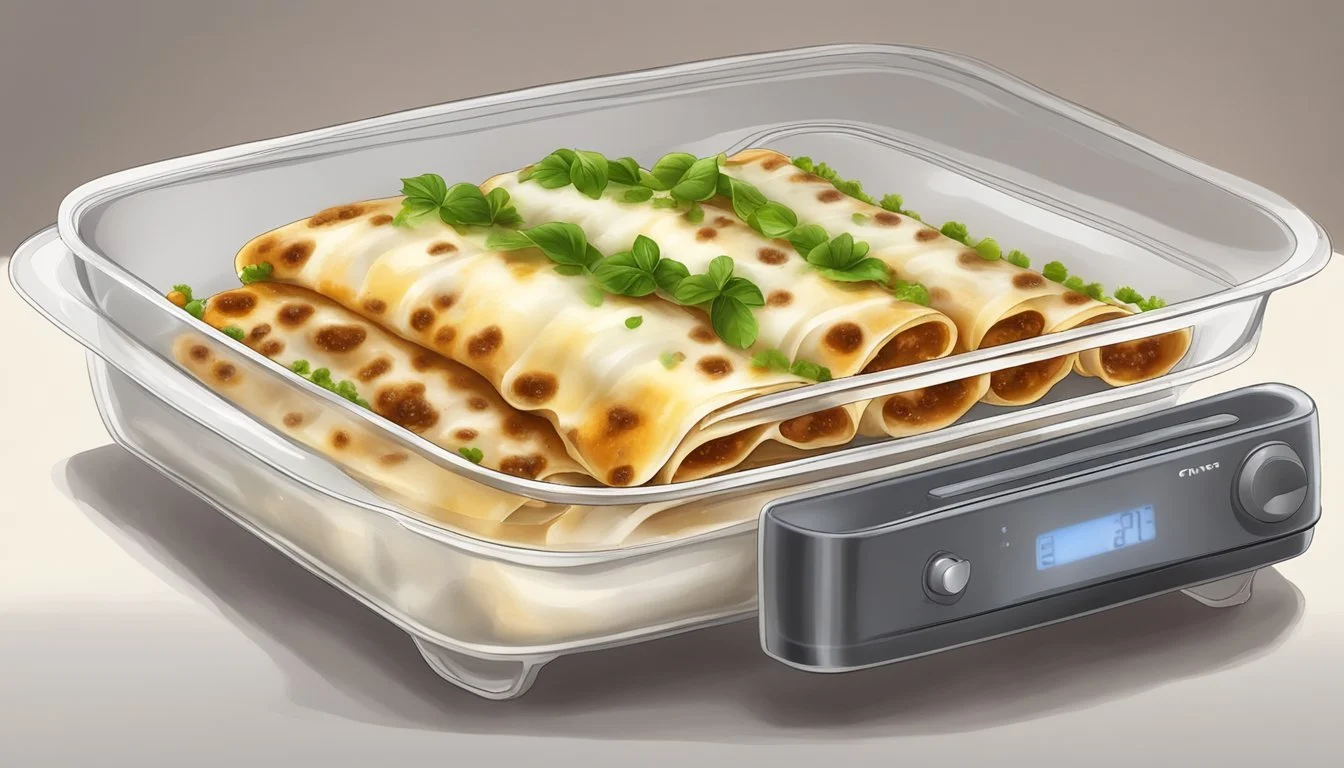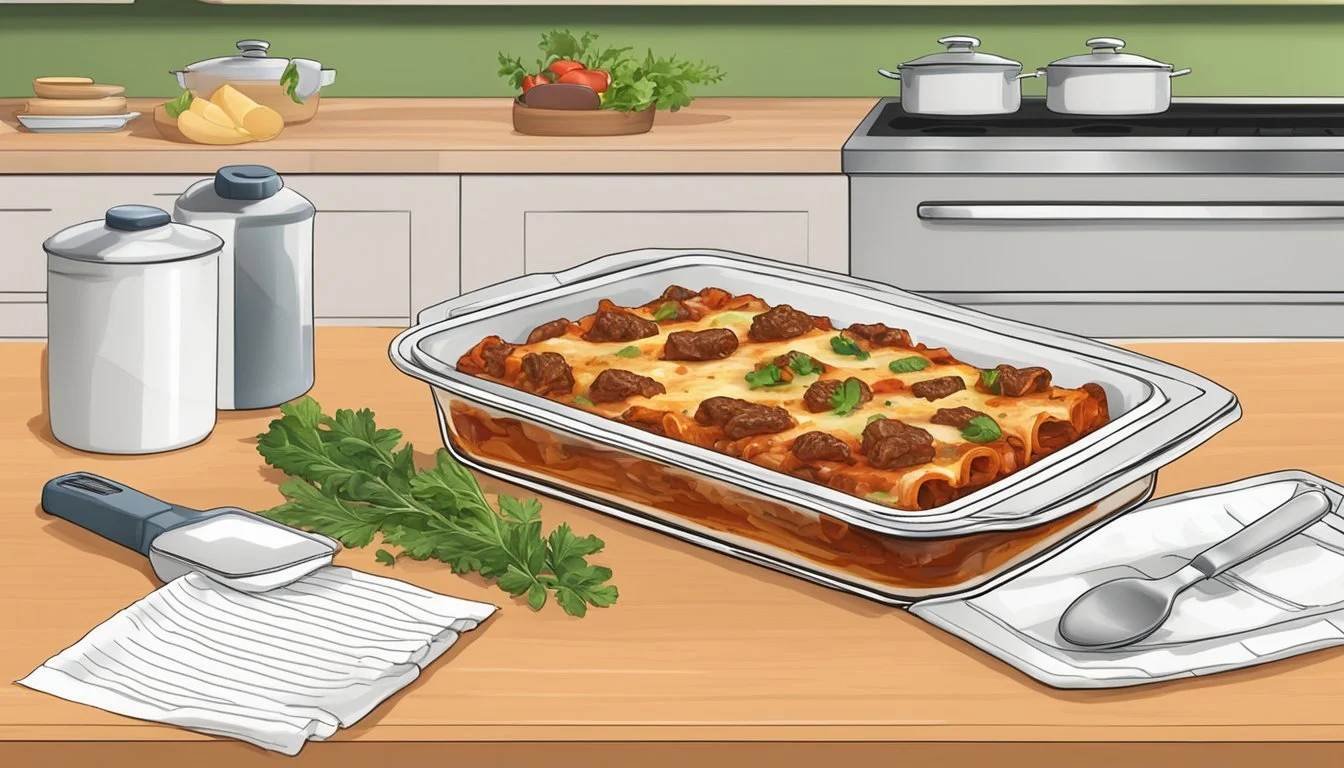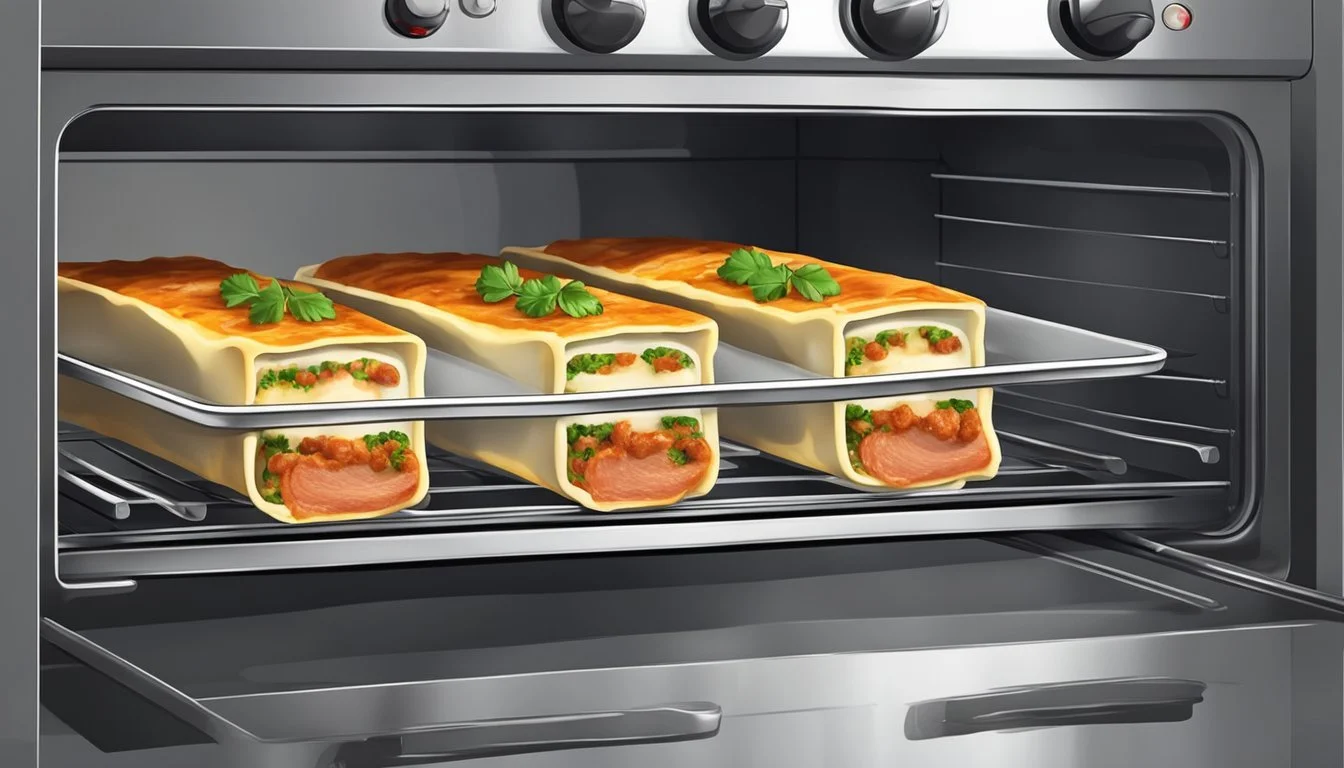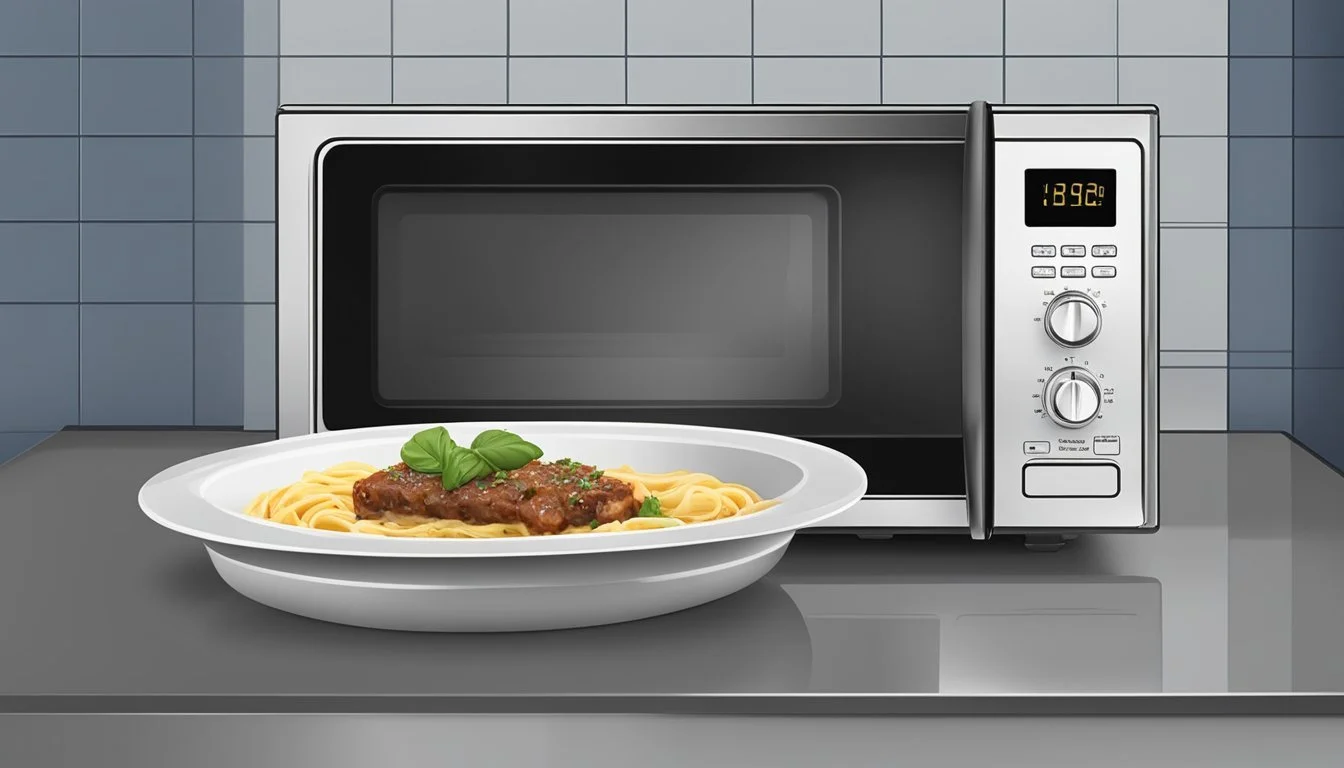How to Reheat Beef Cannelloni
Best Methods for Perfect Flavor
Reheating beef cannelloni without compromising its taste and texture can be a challenge many face in the kitchen. Whether you have leftover cannelloni from last night's dinner or you prepared it in advance, nobody wants to end up with a meal that's dry or unevenly warmed. The most effective method to reheat beef cannelloni is to use an oven set to 350°F (175°C) for about 20-25 minutes, ensuring the dish remains moist and delicious.
For those in a rush, the microwave can be a quick alternative. Cover the cannelloni with a microwave-safe lid or plastic wrap and add a small amount of water or beef broth to retain moisture. Heat in short increments, stirring occasionally, to avoid hot spots and ensure an even temperature throughout.
Stovetop reheating is another viable option. Place the pasta in a skillet or pot, add a bit of liquid, and heat over medium-high heat while stirring frequently. This method is especially useful for those who prefer a slightly crispy texture on the edges.
Understanding Beef Cannelloni
Beef cannelloni is a beloved Italian pasta dish featuring a rich, savory filling encased in tender pasta tubes and often topped with a luscious sauce. This dish exemplifies the comforts of homemade Italian cuisine.
Components of Beef Cannelloni
The primary ingredients of beef cannelloni include the pasta tubes, beef filling, and sauce. The pasta tubes are typically made from durum wheat, offering a sturdy vessel for the filling. The filling is usually a mixture of ground beef, onions, garlic, and various vegetables sautéed together.
Herbs like basil and oregano are often added for flavor. The filling is bound together with ingredients such as eggs and cheese, ensuring a cohesive mixture. A common choice for cheese is ricotta, combined with Parmesan or mozzarella. The sauce, frequently a tomato-based sauce, enhances the flavors and provides moisture during baking. A classic béchamel sauce can also be used for a creamy variation.
Popular Variations
Although traditional beef cannelloni consists of the components mentioned above, there are several popular variations that bring different flavors and textures. Some variations might substitute the ground beef with other meats like pork or sausage. Vegetarians might enjoy a version filled with spinach and ricotta.
The choice of sauce can also be diverse, from marinara to Alfredo or even pesto. Adding different cheeses such as Gruyère or Asiago can provide unique twists. These variations maintain the spirit of Italian cuisine while allowing for personal preferences and dietary requirements.
Storage Tips for Beef Cannelloni
Proper storage of beef cannelloni ensures that leftovers retain their flavor and texture. Different methods are required for short-term refrigeration and longer-term freezing.
Storing in the Fridge
To store beef cannelloni in the fridge, place the cooled leftovers in an airtight container. This prevents moisture loss and keeps the cannelloni fresh. Use aluminum foil or a layer of plastic wrap to cover the container for extra protection.
It is crucial to keep the fridge at or below 40°F (4°C). Consume refrigerated cannelloni within 3-4 days to avoid spoiling. Label the container with the date to track storage duration. Refrigerating the cannelloni in smaller portions can also help in easier heating and quicker consumption.
Freezing and Thawing
For longer storage, beef cannelloni can be frozen. First, let the cannelloni cool completely. Wrap individual portions in aluminum foil or place them in a freezer-friendly ziplock bag. Ensure all air is removed to prevent freezer burn.
Store the wrapped cannelloni in a single layer to help them freeze faster. When ready to use, the cannelloni can be thawed in the fridge overnight. Reheat in the oven at 350°F (175°C) or in the microwave, ensuring the internal temperature reaches 165°F (74°C) for safety. Label the packages with the date, and use within 2-3 months for best quality.
Preparation for Reheating
Proper preparation ensures your beef cannelloni retains its delicious texture and flavor during reheating. Key aspects include retaining moisture, achieving even heating, and using appropriate temperatures.
Pre-Reheating Tips
To preserve the texture and moisture of beef cannelloni, it's crucial to prepare it properly before reheating. Start by adding a small amount of liquid such as water, beef broth, or marinara sauce. This helps to keep the dish moist.
Using foil or a microwave-safe lid is essential to trap steam and prevent the pasta from drying out. For oven reheating, preheat to 350°F (175°C) and cover the cannelloni with foil. In the microwave, cover with microwave-safe wrap and heat at medium power.
If using a skillet, add a bit of water or broth and cover to maintain a steamy environment. This method requires frequent stirring to prevent sticking and ensure even heating.
Thawing Frozen Cannelloni
Thawing frozen beef cannelloni in advance is critical for even reheating. The best method is to transfer the dish from the freezer to the refrigerator, allowing it to thaw slowly over several hours or overnight.
If time is limited, use the microwave's defrost setting. Place the cannelloni in a microwave-safe dish, cover, and use short intervals to check and stir the dish to ensure uniform thawing.
Avoid using warm water or direct heat to thaw, as these methods can compromise the cannelloni's structure and texture. Gradual thawing is the best way to maintain quality and ensure that your dish reheats evenly and safely.
Reheating Methods
To reheat beef cannelloni while maintaining its flavor, texture, and moisture, specific methods such as using an oven, a microwave, or a stovetop can be employed. Each method requires attention to detail, ensuring the dish remains delicious.
Oven Technique
When reheating beef cannelloni in the oven, preheat the oven to 350°F (175°C). Place the cannelloni in an oven-safe dish and cover it with aluminum foil to trap steam and moisture. Add a small amount of beef broth or water to prevent the pasta from drying out. Bake the dish on the center rack for about 20-25 minutes, checking periodically to ensure it heats evenly. Remove the foil during the last few minutes if you prefer a slightly crispier texture on top, especially if the dish includes melted cheese.
Microwave Method
For a quicker option, the microwave method is effective. Place the cannelloni in a microwave-safe dish and sprinkle one to two tablespoons of water or beef broth over it. Cover the dish with a microwave-safe lid or plastic wrap, leaving a small vent to release steam. Set the microwave to medium or medium-high, and heat in 1-2 minute intervals, stirring in between to ensure even reheating. Avoid overheating, which can make the pasta too soft or mushy.
Stovetop Reheating
The stovetop method can reinvigorate leftovers with a freshly-cooked feel. Place the cannelloni in a skillet or pot over medium-high heat. Add a small amount of water or beef broth and cover the skillet to maintain moisture. Stir occasionally to heat the cannelloni evenly. This method helps maintain a firm, al dente texture. When the cannelloni is heated through, you may remove the cover and let it cook for an additional minute or two to evaporate excess moisture, enhancing the overall flavor.
These methods ensure that the cannelloni retains its delicious texture and flavor, providing a mouth-watering meal even when reheated.
Serving and Pairing
Reheating beef cannelloni to perfection is just part of the process. Proper garnishing and thoughtful accompaniments can elevate the dish, enhancing presentation and flavors.
Garnishing and Presentation
Garnishing beef cannelloni involves using fresh herbs and rich cheeses to add visual appeal and flavor. Parmesan and mozzarella can be sprinkled on top for a melted, golden crust. Chopped parsley or basil offers a fresh, vibrant touch that contrasts nicely with the rich beef filling.
For a clean look, neatly arrange the cannelloni on a serving platter. A drizzle of warmed marinara sauce around the edges of the dish adds color and moisture, making it more inviting. Garnishing is not just about looks; it also enhances the dining experience by adding aromatic elements.
Accompaniments
Pairing beef cannelloni with the right sides can make for a balanced meal. A crisp Italian salad with mixed greens, tomatoes, and a light vinaigrette provides a refreshing contrast to the rich cannelloni. Garlic bread is another excellent choice, ideal for soaking up any extra sauce.
Consider a side of roasted or steamed vegetables like zucchini or broccoli for added nutritional value. Finally, a glass of red wine, such as Chianti, pairs well, complementing the flavors without overpowering the dish. Proper accompaniments ensure a well-rounded, satisfying dining experience.
Safety and Quality
When reheating beef cannelloni, ensuring safety and maintaining the quality of your dish is of utmost importance. This involves focusing on proper reheating techniques and methods that preserve flavor, texture, and moisture.
Understanding Reheating Safety
Temperature plays a crucial role in food safety. It's essential to reheat beef cannelloni to an internal temperature of 165°F (74°C). Using a food thermometer can help verify this.
Bacteria can thrive if food is not adequately reheated. Ensuring a consistent and thorough reheating process reduces the risk of foodborne illnesses. Covering the dish while reheating can also help in maintaining even heat distribution.
Avoid leaving the cannelloni at room temperature for too long. Store leftovers in the refrigerator within two hours after cooking and consume them within three to four days for best safety practices.
Maintaining Quality and Flavor
Retaining the cheesy, bubbly, and juicy qualities of beef cannelloni is vital for an enjoyable meal. Sprinkling a bit of water or beef broth over the portions before reheating can help retain moisture.
Covering the cannelloni with a lid or plastic wrap traps steam, keeping it from drying out. Baking in the oven at 350°F (175°C) for around 20-25 minutes is optimal for achieving a bubbly texture while maintaining moisture.
Microwaving is also an option but use a microwave-safe cover to trap steam. Stirring halfway through can ensure even heating.
By following these steps, the beef cannelloni can be enjoyed as a delicious leftover, tasting almost as delightful as when it was freshly made.






